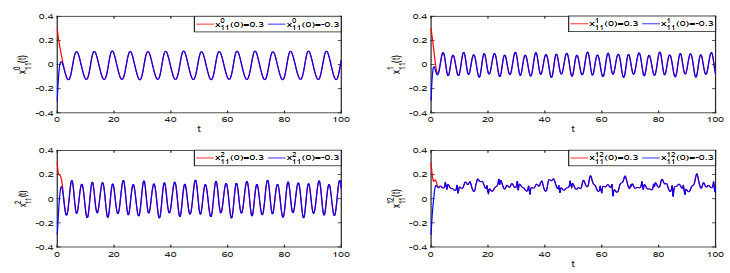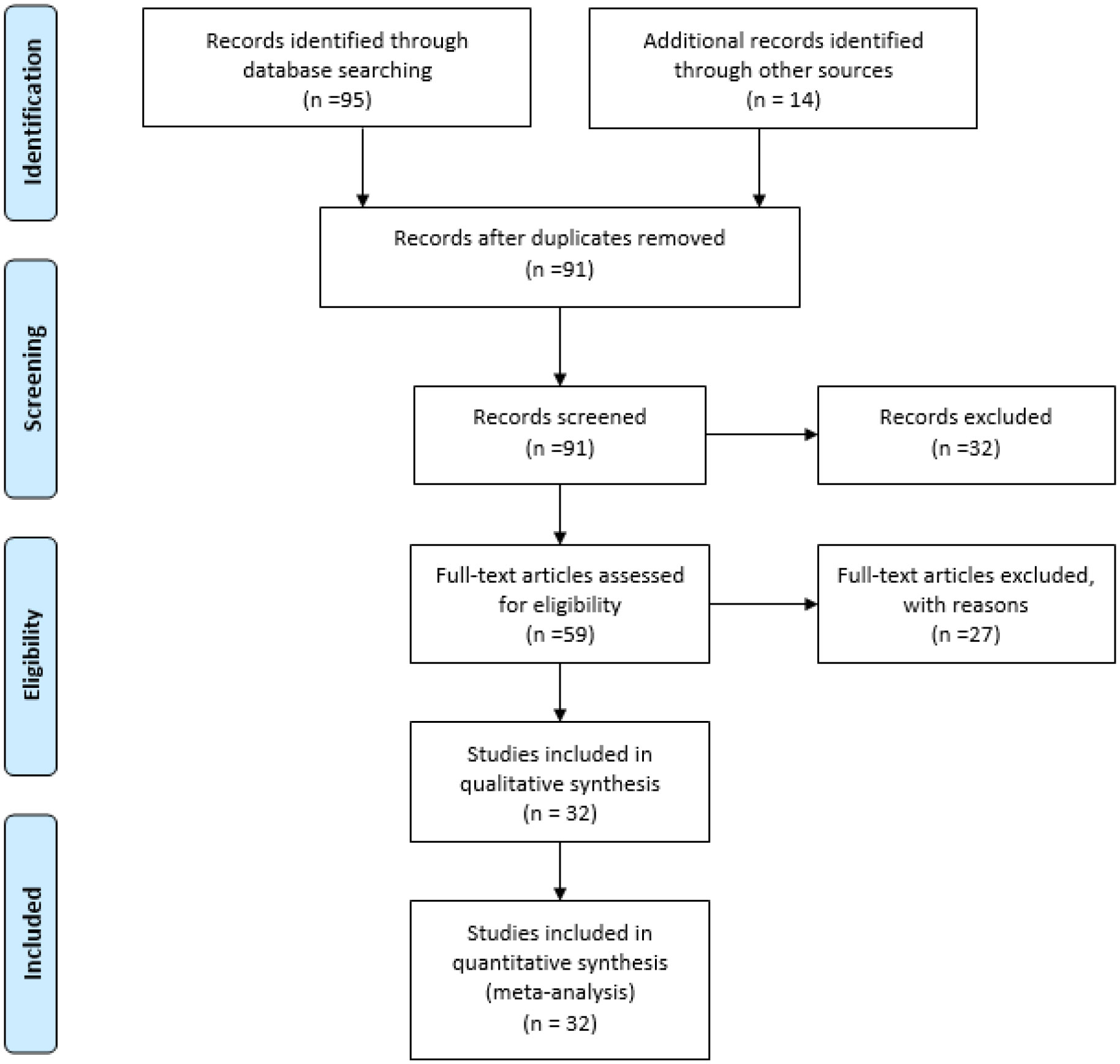1.
Introduction
As stated in [1], a nervous system in the real world, synaptic transmission is a noisy process caused by random fluctuations in neurotransmitter release and other probabilistic factors. Therefore, it is necessary to consider stochastic neural networks (NNs) because random inputs may change the dynamics of the (NN) [2,3,4,5].
SICNNs, which were proposed in [6], have attracted the interest of many scholars since their introduction due to their special roles in psychophysics, robotics, adaptive pattern recognition, vision, and image processing. In the above applications, their dynamics play an important role. Thereupon, their various dynamics have been extensively studied (see [7,8,9,10,11,12,13] and references therein). However, there is limited research on the dynamics of stochastic SICNNs. Therefore, it is necessary to further study the dynamics of such NNs.
On the one hand, research on the dynamics of NNs that take values from a non commutative algebra, such as quaternion-valued NNs [14,15,16], octonion-valued NNs [17,18,19,20], and Clifford-valued NNs [21,22,23], has gained the interest of many researchers because such neural networks can include typical real-valued NNs as their special cases, and they have superior multi-dimensional signal processing and data storage capabilities compared to real-valued NNs. It is worth mentioning that in recent years, many authors have conducted extensive research on various dynamics of Clifford-valued NNs, such as the existence, multiplicity and stability of equilibrium points, and the existence, multiplicity and stability of almost periodic solutions as well as the synchronization problems [22,23,24,25,26,27,28,29,30]. However, most of the existing results for the dynamics of Clifford-valued NNs has been obtained through decomposition methods [24,25,26,27]. However, the results obtained by decomposition methods are generally not convenient for direct application, and there is little research on Clifford-valued NNs using non decomposition methods [28,29,30]. Therefore, further exploration of using non decomposition methods to study the dynamics of Clifford-valued NNs has important theoretical significance and application value.
On the other hand, Bohr's almost periodicity is a special case of Stepanov's almost periodicity, but there is little research on the Stepanov periodic oscillations of NNs [19,31,32,33], especially the results of Stepanov's almost periodic solutions of stochastic SICNNs with discrete and infinitely distributed delays have not been published yet.
Motivated by the discussion above, our purpose of this article is to establish the existence and global exponential stability of Stepanov almost periodic solutions in the distribution sense for a stochastic Clifford-valued SICNN with mixed delays via non decomposition methods.
The subsequent sections of this article are organized as follows. Section 2 introduces some concepts, notations, and basic lemmas and gives a model description. Section 3 discusses the existence and stability of Stepanov almost periodic solutions in the distribution sense of the NN under consideration. An example is provided in Section 4. Finally, Section 5 provides a brief conclusion.
2.
Preliminaries and model description
Let A={∑ϑ∈Pxϑeϑ,xϑ∈R} be a real Clifford-algebra with N generators e∅=e0=1, and eh,h=1,2,⋯,N, where P={∅,0,1,2,⋯,ϑ,⋯,12⋯N}, e2i=1,i=1,2,⋯,r,e2i=−1,i=r+1,r+2,⋯,m,eiej+ejei=0,i≠j and i,j=1,2,⋯,N. For x=∑ϑ∈Pxϑeϑ∈A, we indicate ‖x‖♭=maxϑ∈P{|xϑ|},xc=∑ϑ≠∅xϑeϑ,x0=x−xc, and for x=(x11,x12,…,x1n,x21,x22,…,x2n,…,xmn)T∈Am×n, we denote ‖x‖0=max{‖xij‖♭,1≤i≤m,1≤j≤n}. The derivative of x(t)=∑ϑ∈Pxϑ(t)eϑ is defined by ˙x(t)=∑ϑ∈P˙xϑ(t)eϑ and the integral of x(t)=∑ϑ∈Pxϑ(t)eϑ over the interval [a,b] is defined by ∫bax(t)dt=∑ϑ∈P(∫baxϑ(t)dt)eϑ.
Let (Y,ρ) be a separable metric space and P(Y) the collection of all probability measures defined on Borel σ-algebra of Y. Denote by Cb(Y) the set of continuous functions f:Y→R with ‖g‖∞:=supx∈Y{|g(x)|}<∞.
For g∈Cb(Y), μ,ν∈P(Y), let us define
According to [34], (Y,ρBL(⋅,⋅)) is a Polish space.
Definition 2.1. [35] A continuous function g:R→Y is called almost periodic if for every ε>0, there is an ℓ(ε)>0 such that each interval with length ℓ has a point τ meeting
We indicate by AP(R,Y) the set of all such functions.
Let (X,‖⋅‖) signify a separable Banach space. Denote by μ(X):=P∘X−1 and E(X) the distribution and the expectation of X:(Ω,F,P)→X, respectively.
Let Lp(Ω,X) indicate the family of all X-valued random variables satisfying E(‖X‖p)=∫Ω‖X‖pdP<∞.
Definition 2.2. [21] A process Z:R→Lp(Ω,X) is called Lp-continuous if for any t0∈R,
It is Lp-bounded if supt∈RE‖Z(t)‖p<∞.
For 1<p<∞, we denote by Lploc(R,X) the space of all functions from R to X which are locally p-integrable. For g∈Lploc(R,X), we consider the following Stepanov norm:
Definition 2.3. [35] A function g∈Lploc(R,X) is called p-th Stepanov almost periodic if for any ε>0, it is possible to find a number ℓ>0 such that every interval with length ℓ has a number τ such that
Definition 2.4. [9] A stochastic process Z∈Lploc(R,Lp(Ω,X)) is said to be Sp-bounded if
Definition 2.5. [9] A stochastic process Z∈Lloc(R,Lp(Ω,H)) is called Stepanov almost periodic in p-th mean if for any ε>0, it is possible to find a number ℓ>0 such that every interval with length ℓ has a number τ such that
Definition 2.6. [9] A stochastic process Z:R→Lp(Ω,X)) is said to be p-th Stepanov almost periodic in the distribution sense if for each ε>0, it is possible to find a number ℓ>0 such that any interval with length ℓ has a number τ such that
Lemma 2.1. [36] (Burkholder-Davis-Gundy inequality) If f∈L2(J,R), p>2, B(t) is Brownian motion, then
where cp=(pp+12(p−1)p−1)p2.
The model that we consider in this paper is the following stochastic Clifford-valued SICNN with mixed delays:
where i=1,2,⋯,m,j=1,2,⋯,n, Cij(t) represents the cell at the (i,j) position, the h1-neighborhood Nh1(i,j) of Cij is given as:
Nh2(i,j),Nh3(i,j) are similarly defined, xij denotes the activity of the cell Cij, Lij(t):R→A corresponds to the external input to Cij, the function aij(t):R→A represents the decay rate of the cell activity, Cklij(t):R→A,Bklij(t):R→A and Eklij(t):R→A signify the connection or coupling strength of postsynaptic activity of the cell transmitted to the cell Cij, and the activity functions f(⋅):A→A, and g(⋅):A→A are continuous functions representing the output or firing rate of the cell Ckl, and τkl(t),σij(t):R→R+ are the transmission delay, the kernel Kij(t):R→R is an integrable function, ωij(t) represents the Brownian motion defined on a complete probability space, δij(⋅):A→A is a Borel measurable function.
Let (Ω, F, {Ft}t⩾0, P) be a complete probability space in which {Ft}t⩾0 is a natural filtration meeting the usual conditions. Denote by BF0([−θ,0],An) the family of bounded, F0-measurable and An-valued random variables from [−θ,0]→An. The initial values of system (2.1) are depicted as
where ϕi∈BF0([−θ,0],A),θ=max1≤i,j≤n{supt∈Rτij(t),supt∈Rσij(t)}.
For convenience, we introduce the following notations:
Throughout this paper, we make the following assumptions:
(A1) For ij∈Λ, f,g,δij∈C(A,A) satisfy the Lipschitz condition, and f,g are bounded, that is, there exist constants Lf>0,Lg>0,Lδij>0,Mf>0,Mg>0 such that for all x,y∈A,
furthermore, f(0)=g(0)=δij(0)=0.
(A2) For ij∈Λ, a0ij∈AP(R,R+),acij∈AP(R,A),τij,σij∈AP(R,R+)∩C1(R,R) satisfying 1−˙τ+ij,1−˙σ+ij>0, Cklij,Bklij,Eklij∈AP(R,A), L=(L11,L12,⋯,Lmn)∈Lploc(R,Lp(Ω,Am×n)) is almost periodic in the sense of Stepanov.
(A3) For p>2,1p+1q=1,
and for p=2,
(A4) For 1p+1q=1,
(A5) The kernel Kij is almost periodic and there exist constants M>0 and u>0 such that |Kij(t)|≤Me−ut for all t∈R.
3.
Main results
Let X indicate the space of all Lp-bounded and Lp-uniformly continuous stochastic processes from R to Lp(Ω,Am×n), then with the norm ‖ϕ‖X=supt∈R{E‖ϕ(t)‖p0}1p, where ϕ=(ϕ11,ϕ12,…,ϕmn)∈X, it is a Banach space.
Set ϕ0=(ϕ011,ϕ012,…,ϕ0mn)T, where ϕ0ij(t)=∫t−∞e−∫tsa0ij(u)duLij(s)ds,t∈R,ij∈Λ. Then, ϕ0 is well defined under assumption (A2). Consequently, we can take a constant κ such that κ≥‖ϕ0‖X.
Definition 3.1. [37] An Ft-progressively measurable stochastic process x(t)=(x11(t),x12(t),…,xmn(t))T is called a solution of system (2.1), if x(t) solves the following integral equation:
In (3.1), let t0→−∞, then one gets
It is easy to see that if x(t) solves (3.2), then it also solves (2.1).
Theorem 3.1. Assume that (A1)–(A4) hold. Then the system (2.1) has a unique Lp-bounded and Lp-uniformly continuous solution in X∗={ϕ∈X:‖ϕ−ϕ0‖X≤κ}, where κ is a constant satisfying κ≥‖ϕ0‖X.
Proof. Define an operator ϕ:X∗→X as follows:
where (ϕ11,ϕ12,…,ϕmn)T∈X, t∈R and
First of all, let us show that E‖Ψϕ(t)−ϕ0(t)‖p0≤κ for all ϕ∈X∗.
Noticing that for any ϕ∈X∗, it holds
Then, we deduce that
By the Hölder inequality, we have
Similarly, one has
By the Burkolder-Davis-Gundy inequality and the Hölder inequality, when p>2, we infer that
When p=2, by the Itˆo isometry, it follows that
Putting (3.5)–(3.9) into (3.4), we obtain that
and
It follows from (3.10), (3.11) and (A3) that ‖Ψϕ−ϕ0‖X≤κ.
Then, using the same method as that in the proof of Theorem 3.2 in [21], we can show that Ψϕ is Lp-uniformly continuous. Therefore, we have Ψ(X∗)⊂X∗.
Last, we will show that Ψ is a contraction mapping. Indeed, for any ψ,φ∈X∗, when p>2, we have
Similarly, for p=2, we can get
From (3.12) and (3.13) it follows that
Hence, by virtue of (A3), Ψ is a contraction mapping. So, Ψ has a unique fixed point x in X∗, i.e., (2.1) has a unique solution x in X∗. □
Theorem 3.2. Assume that (A1)–(A5) hold. Then the system (2.1) has a unique p-th Stepanov-like almost periodic solution in the distribution sense in X∗={ϕ∈X:‖ϕ−ϕ0‖X≤κ}, where κ is a constant satisfying κ≥‖ϕ0‖X.
Proof. From Theorem 3.1, we know that (2.1) has a unique solution x in X∗. Now, let us show that x is Stepanov-like almost periodic in distribution. Since x∈X∗, it is Lp-uniformly continuous and satisfies ‖x‖≤2κ. So, for any ε>0, there exists δ∈(0,ε), when |h|<δ, we have supt∈RE‖x(t+h)−x(t)‖p0<ε. Hence, we derive that
For the δ above, according to (A2), we have, for ij∈Λ,
As , by (3.14), there holds
Based on (3.2), we can infer that
in which is a Brownian motion having the same distribution as .
Let us consider the process
From (3.2) and (3.15), we deduce that
Employing the Hölder inequality, we can obtain
By a change of variables and Fubini's theorem, we infer that
where
Similarly, when , one can obtain
where
and when , we have
where
In the same way, we can get
Noting that
We can gain
when , we have
for , we get
Substituting (3.17)–(3.36) into (3.16), we have the following two cases:
Case 1. When , we have
where is the same as that in and
By , we know . Hence, we derive that
Case 2. When , we can obtain
where is defined in and
Similar to the previous case, by , we know and hence, we can get that
Noting that
Hence, we have
Combining (3.37)–(3.39), we can conclude that is -th Stepanov almost periodic in the distribution sense. The proof is complete. □
Similar to the proof of Theorem 3.7 in [21], one can easily show that.
Theorem 3.3. Suppose that – are fulfilled and let be the Stepanov almost periodic solution in the distribution sense of system (2.1) with initial value . Then there exist constants and such that for an arbitrary solution with initial value satisfies
where , i.e., the solution is globally exponentially stable.
4.
Numerical example
The purpose of this section is to demonstrate the effectiveness of the results obtained in this paper through a numerical example.
In neural network (2.1), choose , , and
and let . Then we get
Take , , then we have
And when , we have
Thus, all assumptions in Theorems 3.2 and 3.3 are fulfilled. So we can conclude that the system (2.1) has a unique -almost periodic solution in the distribution sense which is globally exponentially stable.
The results are also verified by the numerical simulations in Figures 1–4.
From these figures, we can observe that when the four primitive components of each solution of this system take different initial values, they eventually tend to stabilize. It can be seen that these solutions that meet the above conditions do exist and are exponentially stable.
5.
Conclusions
In this article, we establish the existence and global exponential stability of Stepanov almost periodic solutions in the distribution sense for a class of stochastic Clifford-valued SICNNs with mixed delays. Even when network (2.1) degenerates into a real-valued NN, the results of this paper are new. In fact, uncertainty, namely fuzziness, is also a problem that needs to be considered in real system modeling. However, we consider only the disturbance of random factors and do not consider the issue of fuzziness. In a NN, considering the effects of both random perturbations and fuzziness is our future direction of effort.
Use of AI tools declaration
The authors declare that they have not used Artificial Intelligence (AI) tools in the creation of this article.
Acknowledgments
This work is supported by the National Natural Science Foundation of China under Grant No. 12261098.
Conflict of interest
The authors declare that they have no conflicts of interest.










 DownLoad:
DownLoad:







